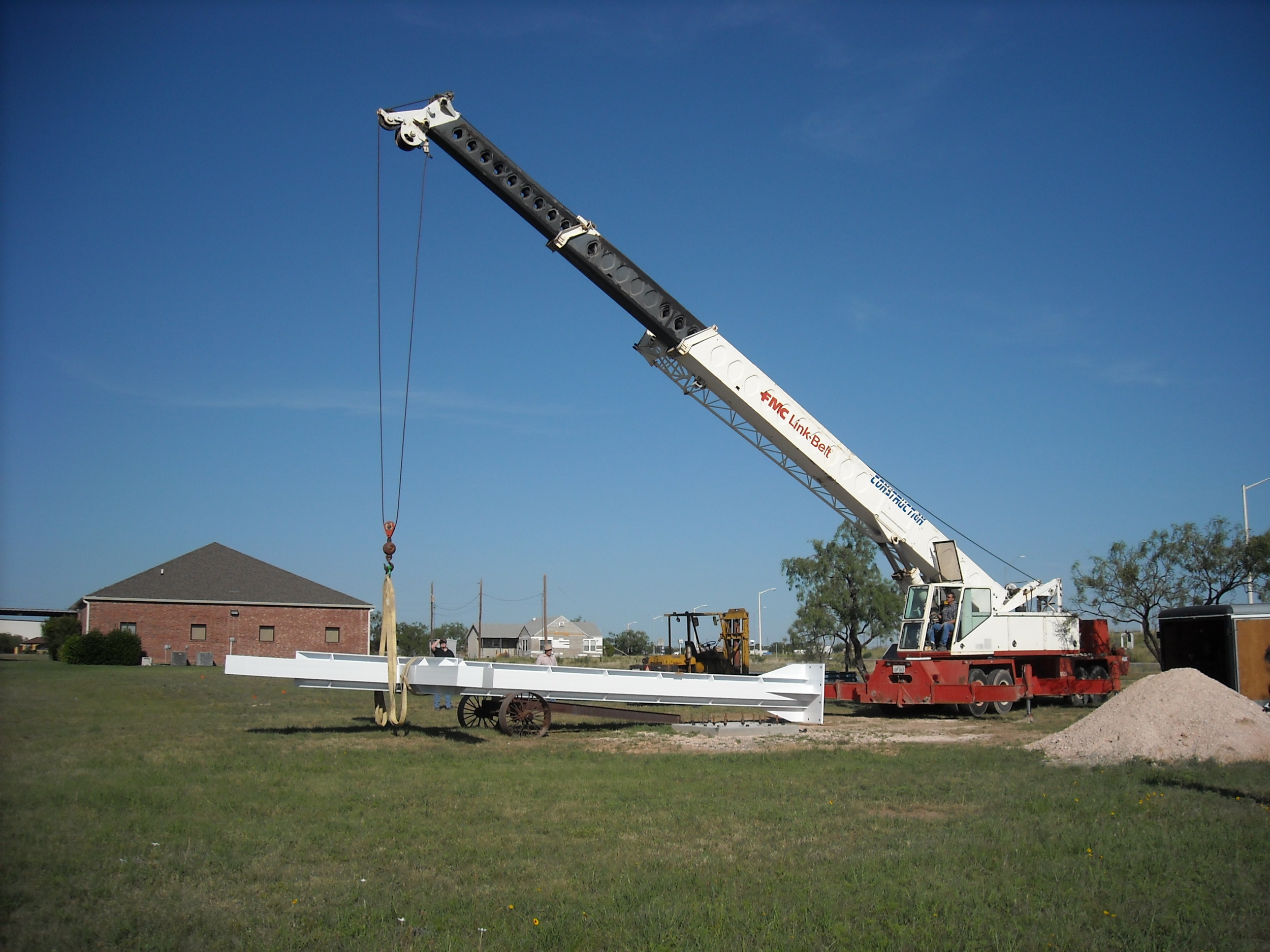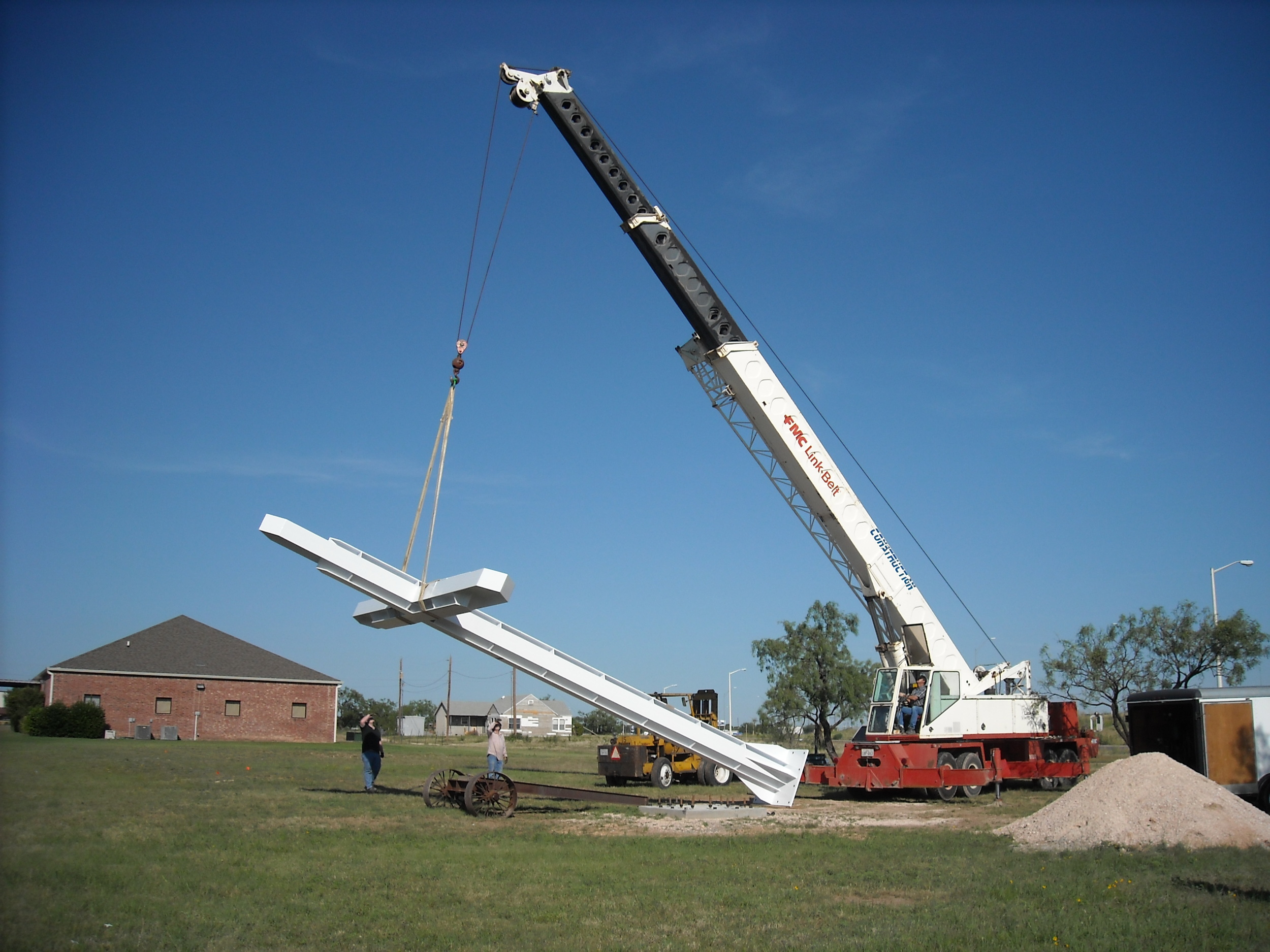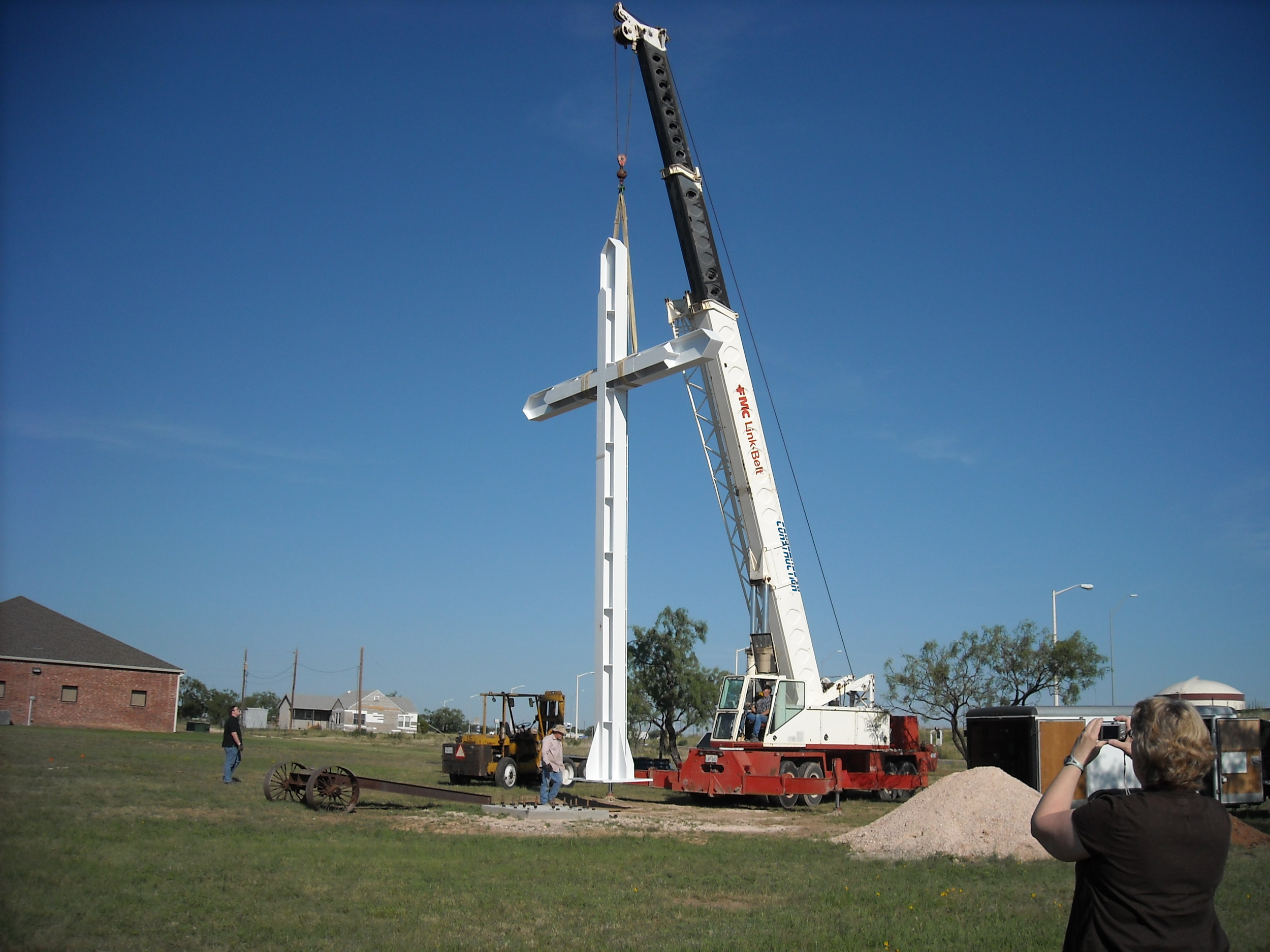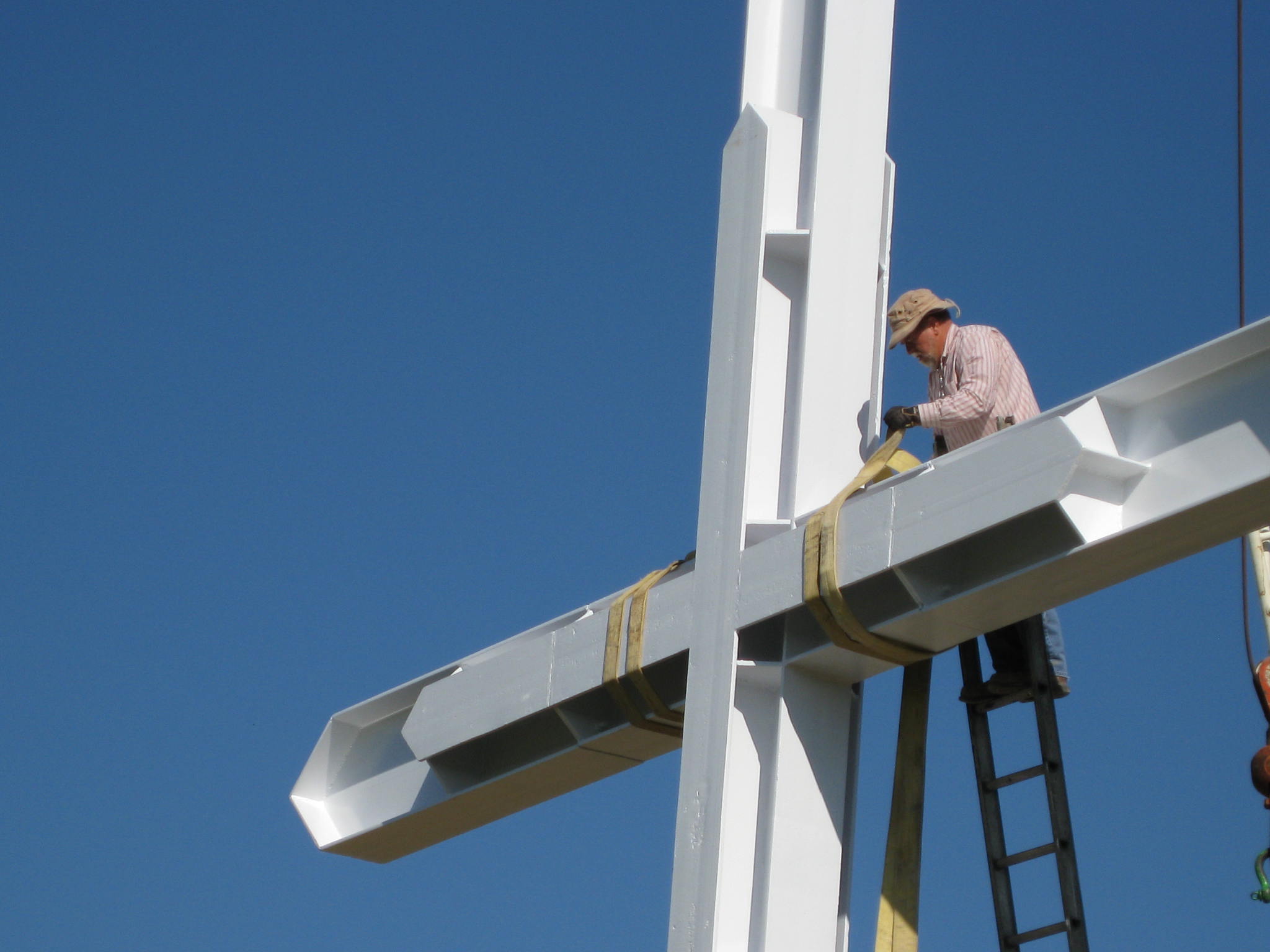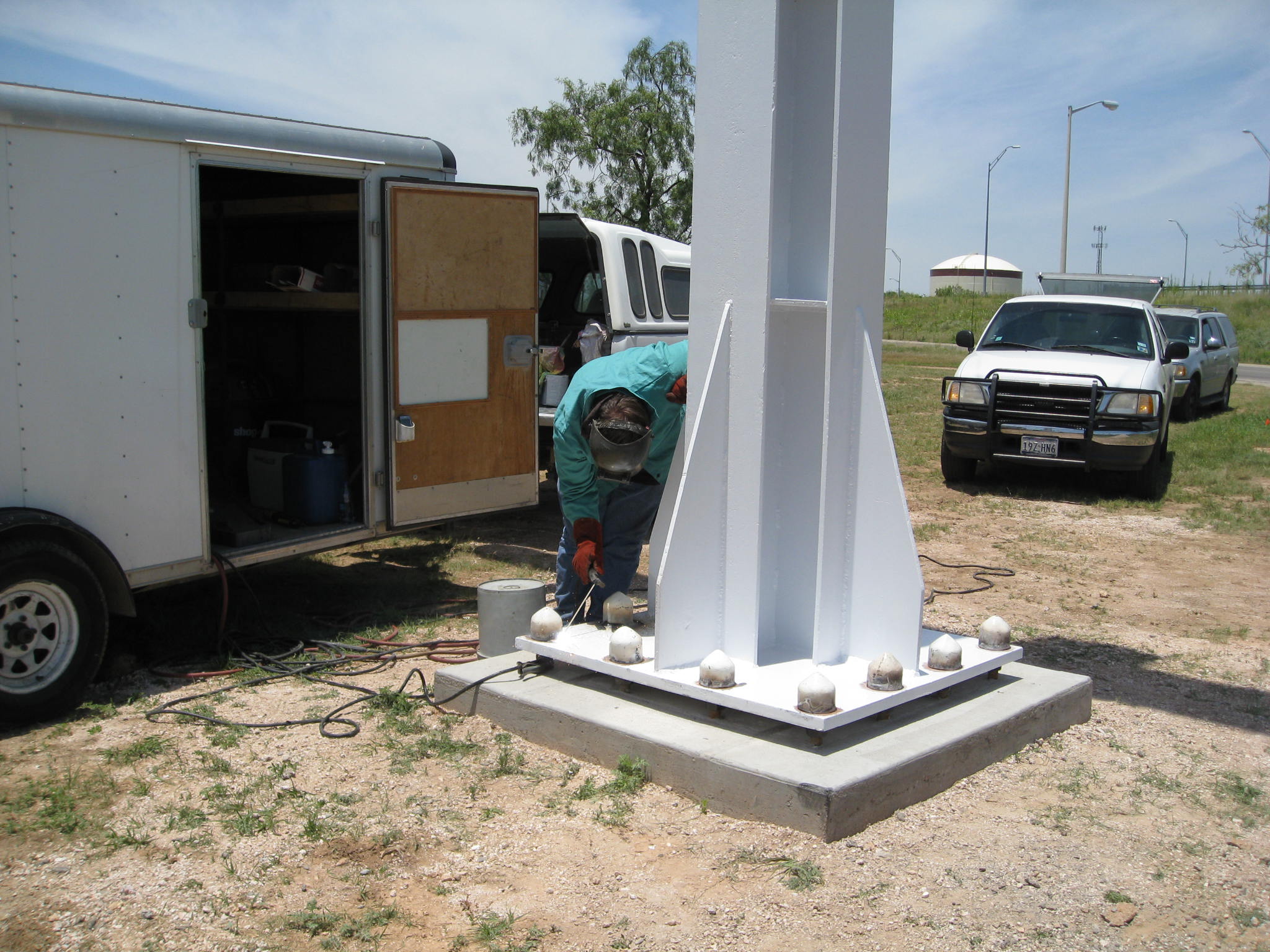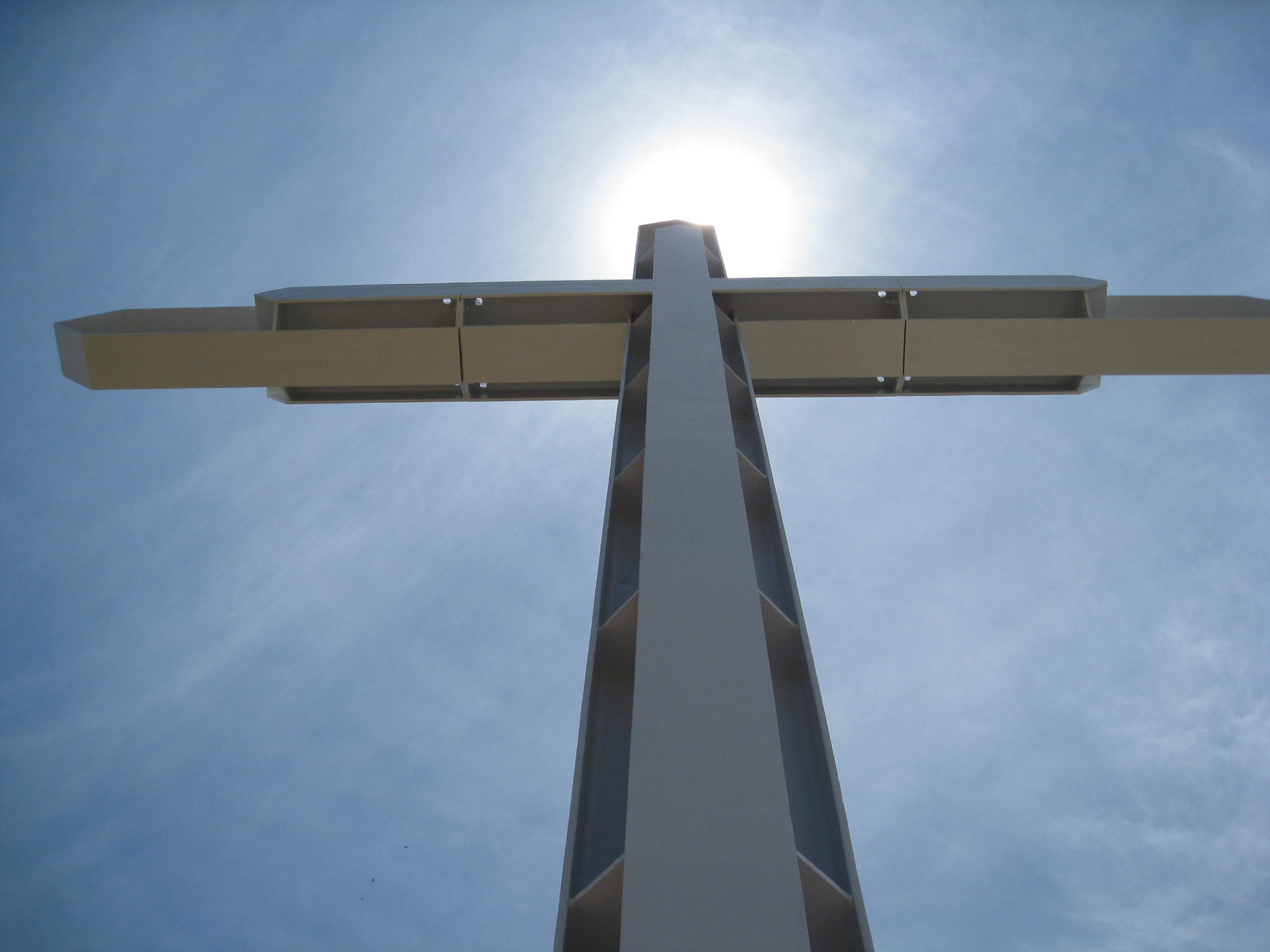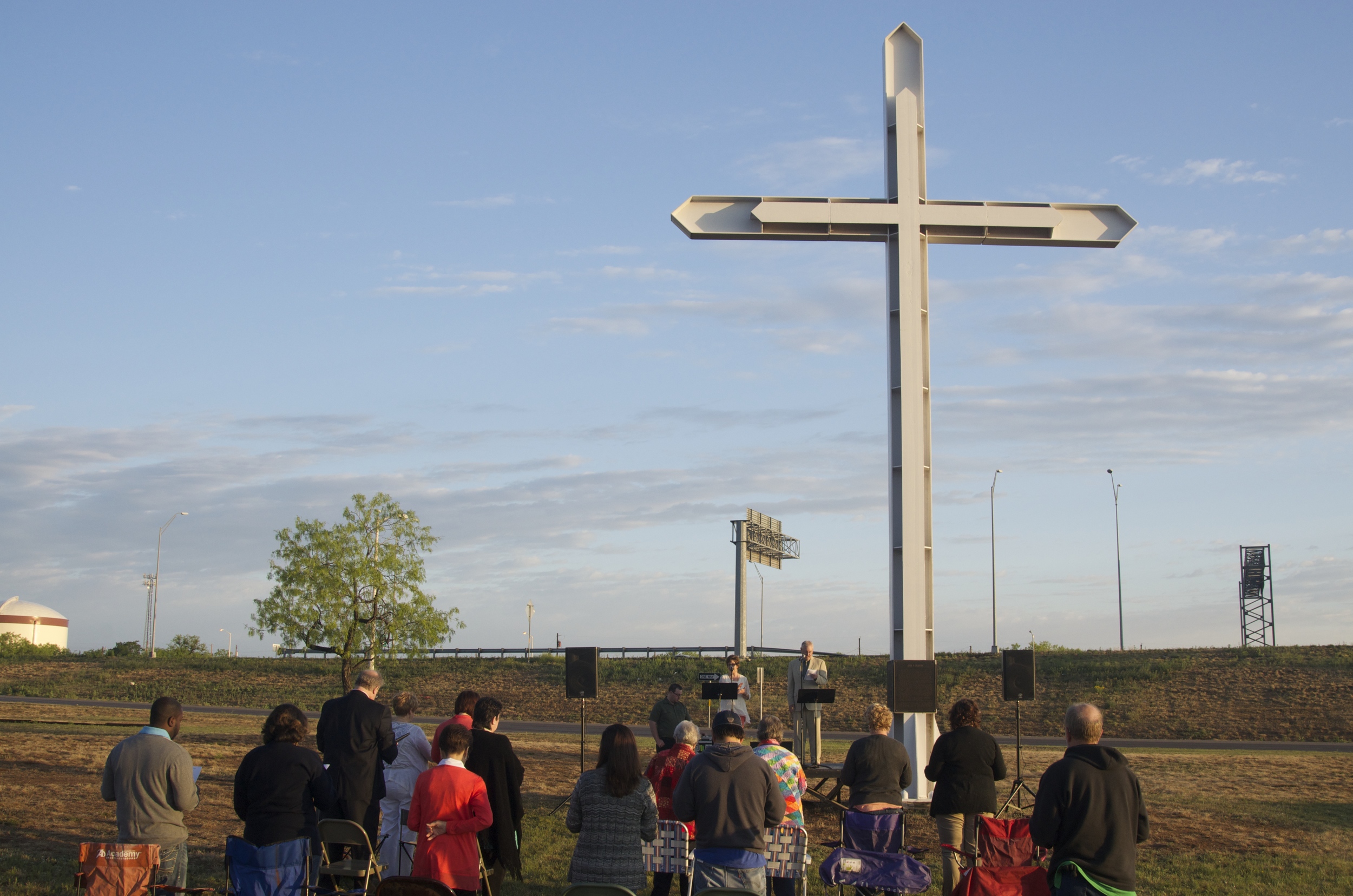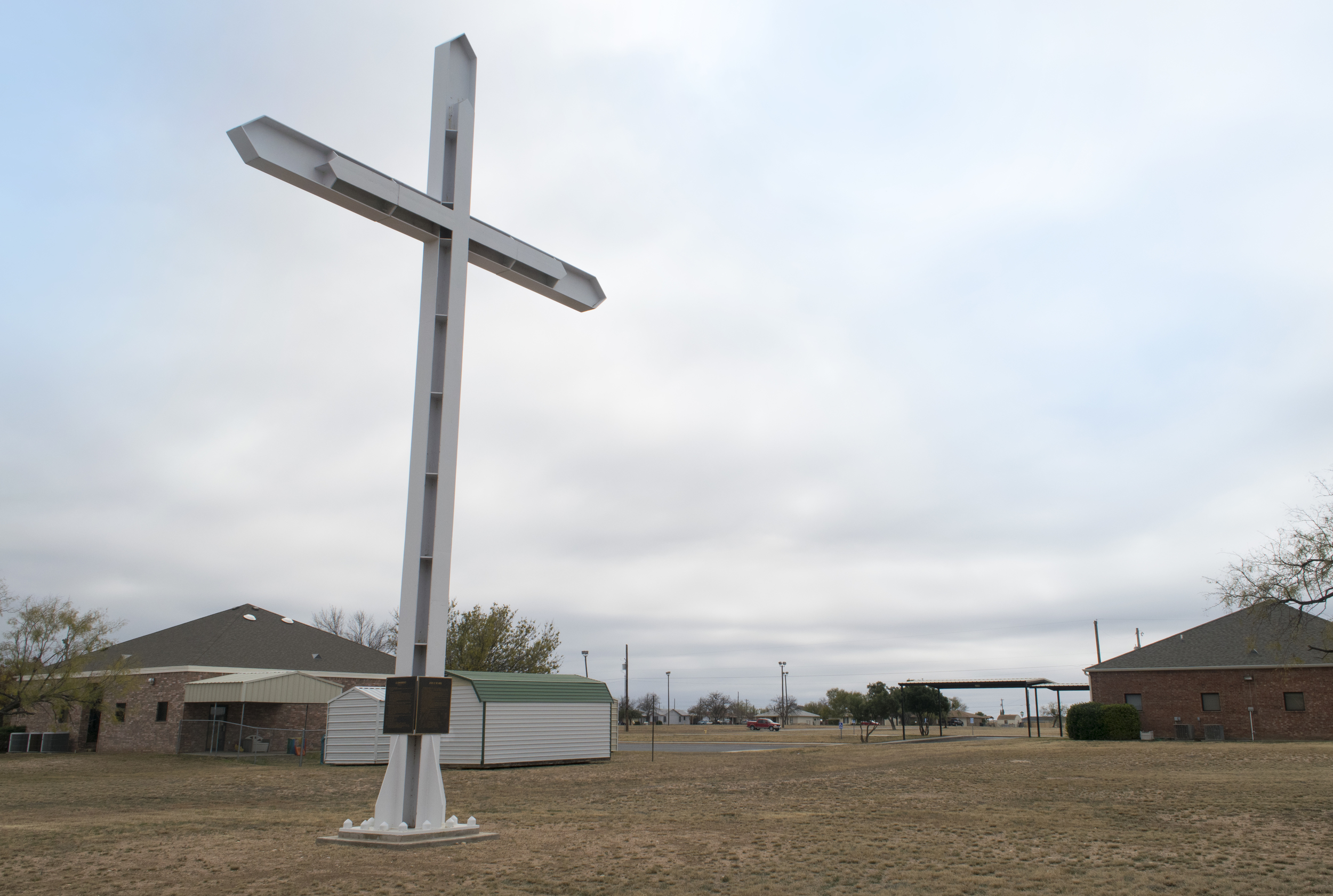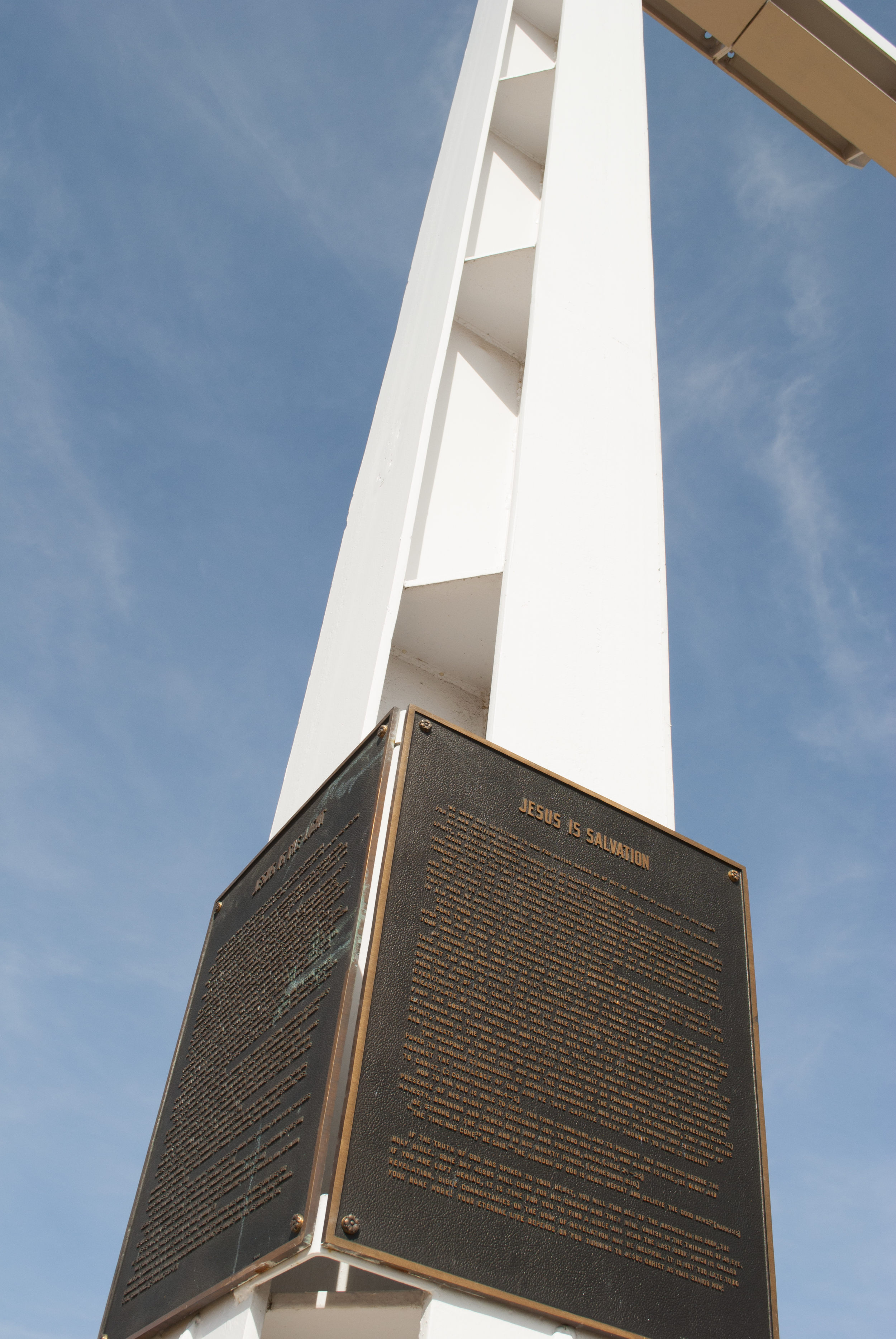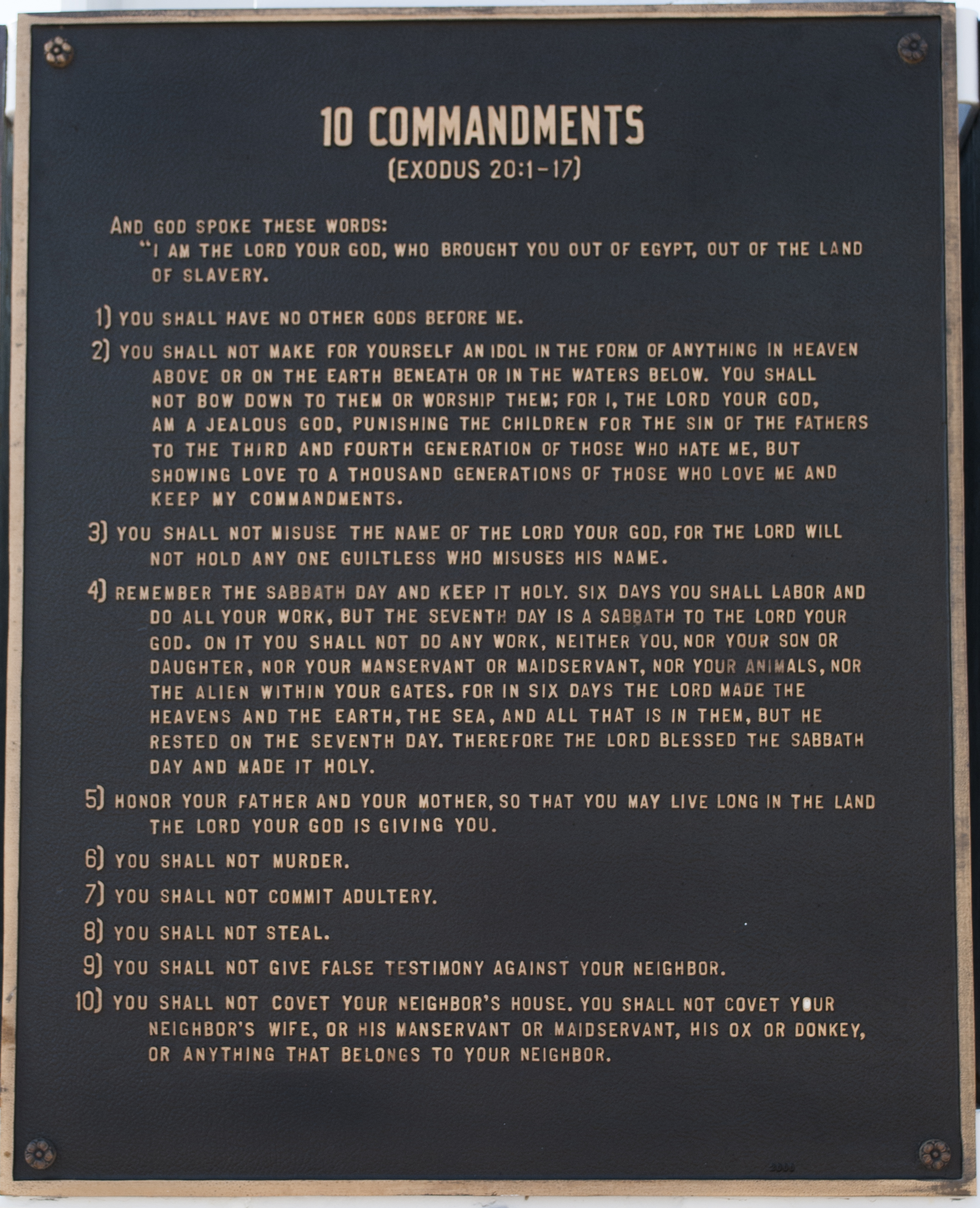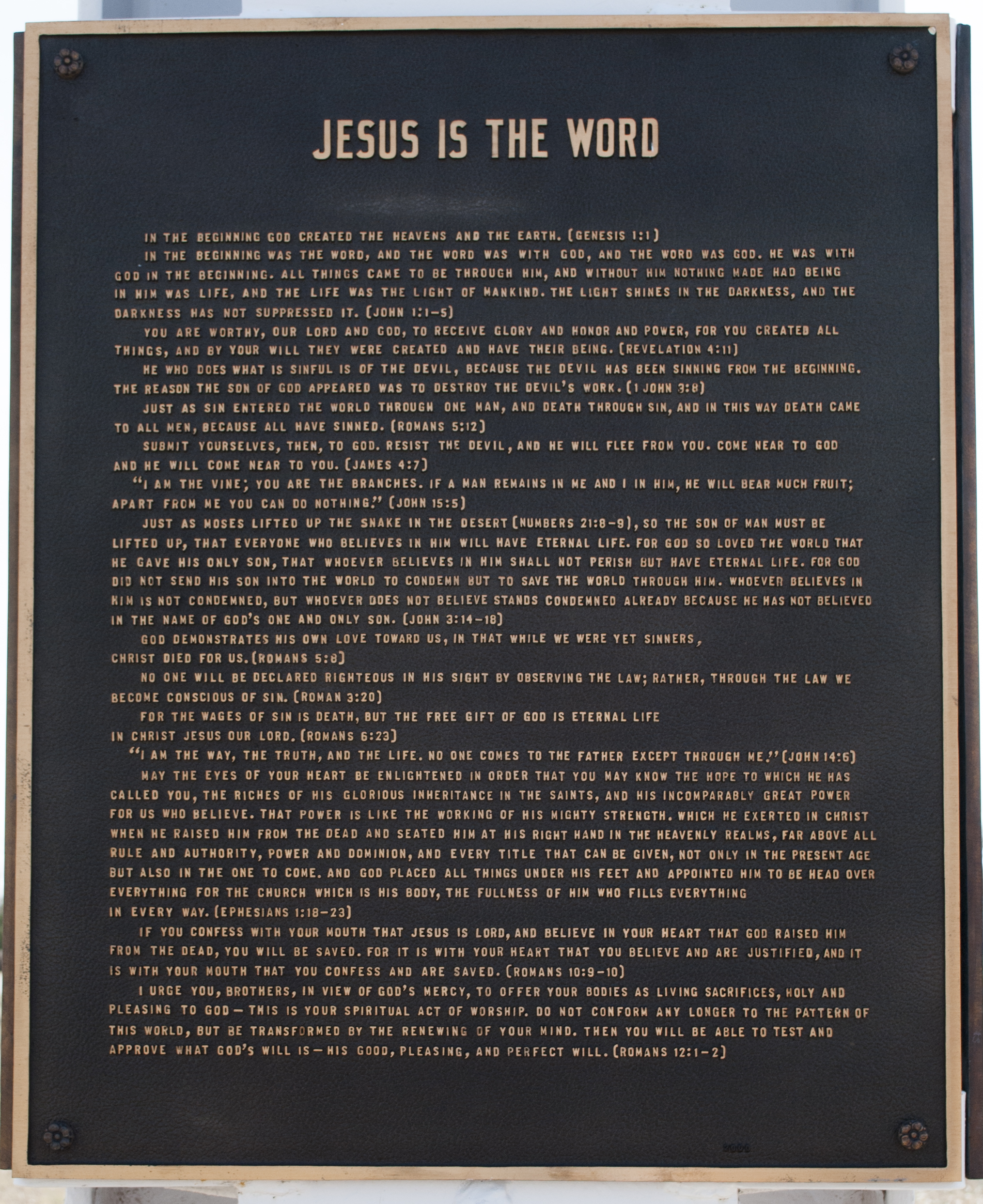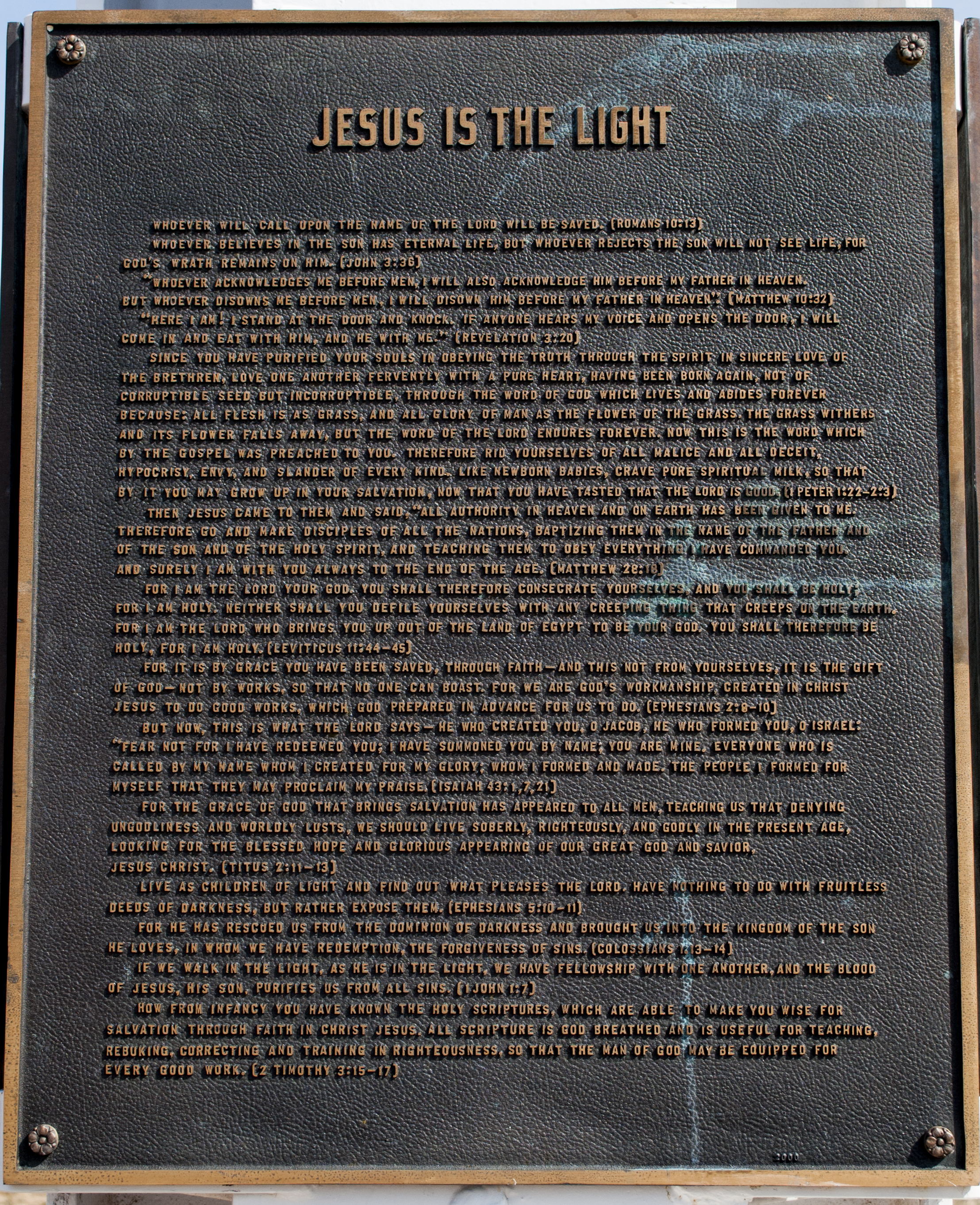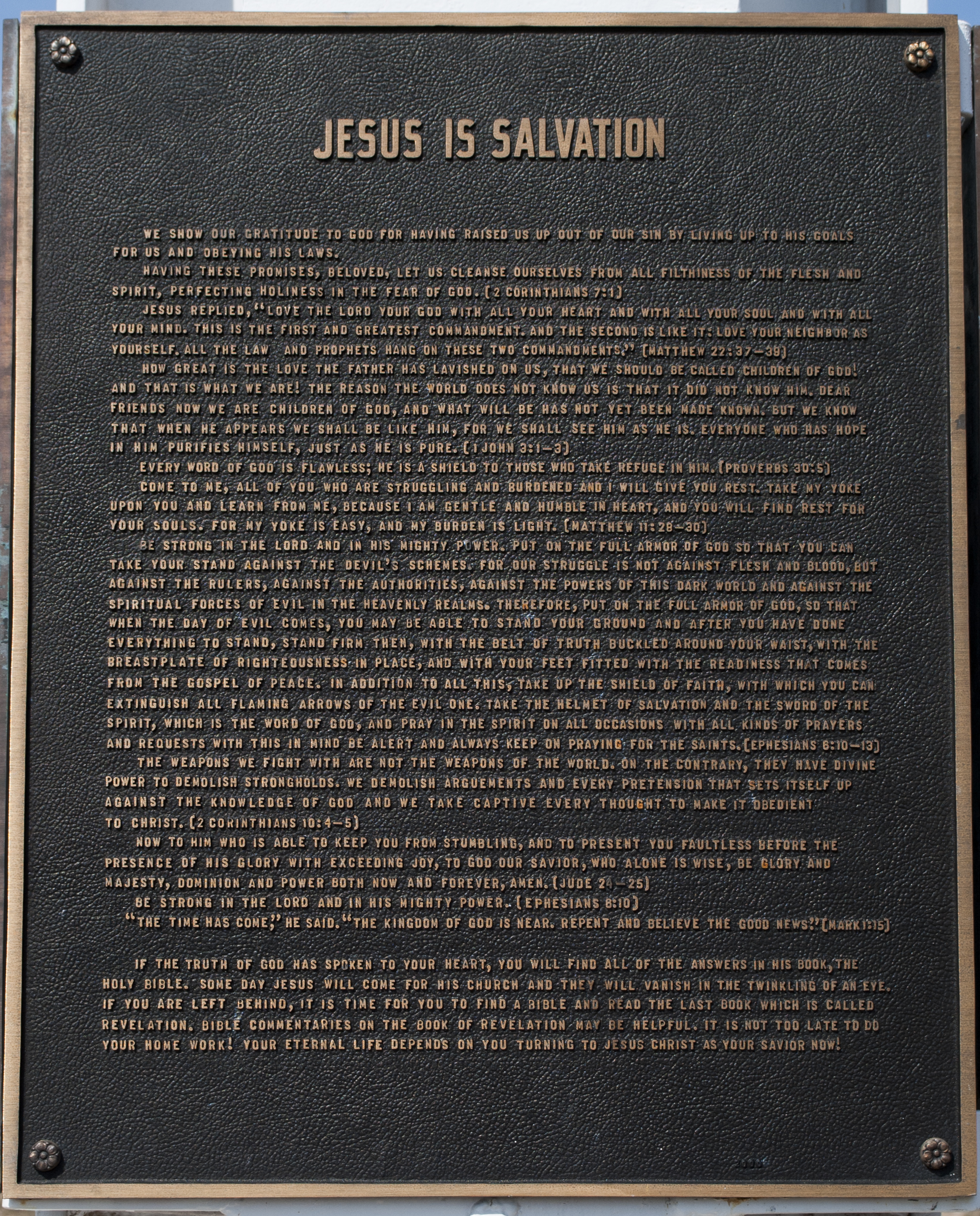The History of the Cross at Parkside
In December of 1999, Western Iron Works constructed a cross from beams salvaged from the foundry. The cross was one of the last manufacturing objects produced by the men after the foundry’s closing in 1998. The beams used to make the cross came from a combination turntable and truck scale; they had suffered some surface damage from the removal of a cement deck as well as from welding and cutting on them. Some of the dents and gouges are still visible today.
The cross stands forty feet tall and twenty-four feet wide. It weighs over seven tons.
It stood at 61 East Sixth Street for three and a half years, until that property was sold. After that, it lay on its back for six years with rain water collecting in it and causing it to rust. It needed a new home.
During the fall of 2007, Bruce Willig approached Pastor Tom Pucci at Parkside Community Church about putting the Western Iron Works cross on the church property. The church’s location was a perfect high visibility location for it. The church would not have to pay any of the costs of permits, transport, or installation. Plans for the locations and designs for the foundation were made over the next year.
The white color of the cross signifies the cleansing of our sins through Jesus’ shed blood on the cross. White also would stand out better in the field it was to be located. The location on the property was selected near the corner of Millspaugh and the Houston Heart access road. This location would allow the best visibility from the Houston Heart Expressway, good public access and a large field to host mass gatherings around it. The location would not interfere with future building expansions between the existing buildings.
By March 19, 2009, the application for the permit was submitted and approved within four days, and plans were set in motion to stand the cross up again at its new home.
The plans called for a concrete five and a half foot square upper section of the foundation that was four feet deep for the anchor bolts that hold the base of the cross and a four foot diameter column that extends fourteen feet into the ground. Western Towers agreed to drill the hole as a training exercise. Their drilling rig was damaged on a job elsewhere, and the drilling was put on hold until the repairs were made. Meanwhile, 1100 pounds of steel arrived and was made into the rebar cage for the concrete in the column and the anchor bolt basket for the upper part of the base.
On May 13, the repairs on the drilling rig were completed and they were ready to drill the hole the next morning. They began drilling at 9:00 a.m. and were finished shortly after lunchtime.
At the original location of the cross, there were several Bibles wrapped in plastic placed at the bottom of the hole so that the foundation would be resting on the Word of God. For the foundation at the new location, the last Bible of former pastor L.G. Tisdale was similarly wrapped and secured to the bottom of the column cage and tied on so that it faces toward Jerusalem.
The foundation passed inspection and the concrete was arranged for the pour. It took ten yards of concrete to complete the foundation for the cross; it was poured on May 18, 2009. As the concrete thundered to the bottom of the hole, the ground actually shook from the impact as it started to fill up. After the pour was complete, the concrete needed to cure for three to four weeks.
After Memorial Day, the disassembled cross was repainted with two fresh coats of white paint. On May 30, the cross body was loaded onto a heavy equipment trailer, and the arms were leaded onto a second trailer to transport it to it new home where it was reassembled and made ready to be set onto the base.
The crane to lift the cross into place was delayed for a few days by rain. But by June 5, M and M Erectors came with their crane to set the cross onto the new foundation. Lifting the cross into place only took about twenty minutes. It was set into place hanging from lifting straps and lowered down onto the bolts and fit perfectly. The nuts were secured onto the cross base plate and three inch pipe caps were welded over the nuts to make it tamper-proof. There are twelve bolts around the base, which mimic the twelve disciples covering the connection between the cross and the foundation of out salvation.
The cross base plate had a three inch gap below it that was to be filled in with grout; this was another opportunity to place another Bible beneath the cross. Pastor Tom Pucci, the current pastor of the church at the time, offered up his well-used Bible to be grouted into the structure. Both the cross and foundation are resting of the Word of God.
There are four bronze plaques mounted around the bottom of the cross; the purpose of the plaques is so that people that were drawn to the cross would be able to gain enough information from them to come to know Jesus and learn about God’s plan of redemption. That information covers three of the plaques. The fourth contain the full length version of the Ten Commandments.
The site of the cross was finished and on June 21, 2009, the congregation of the church met at the cross for prayers of dedication for the cross and anointing it with oil.
The cross has stood there ever since as a beacon of hope in a darkened world and as a declaration of Jesus' victory over death.
Parkside Community Foursquare Church is happy to be that church with the big white cross.


